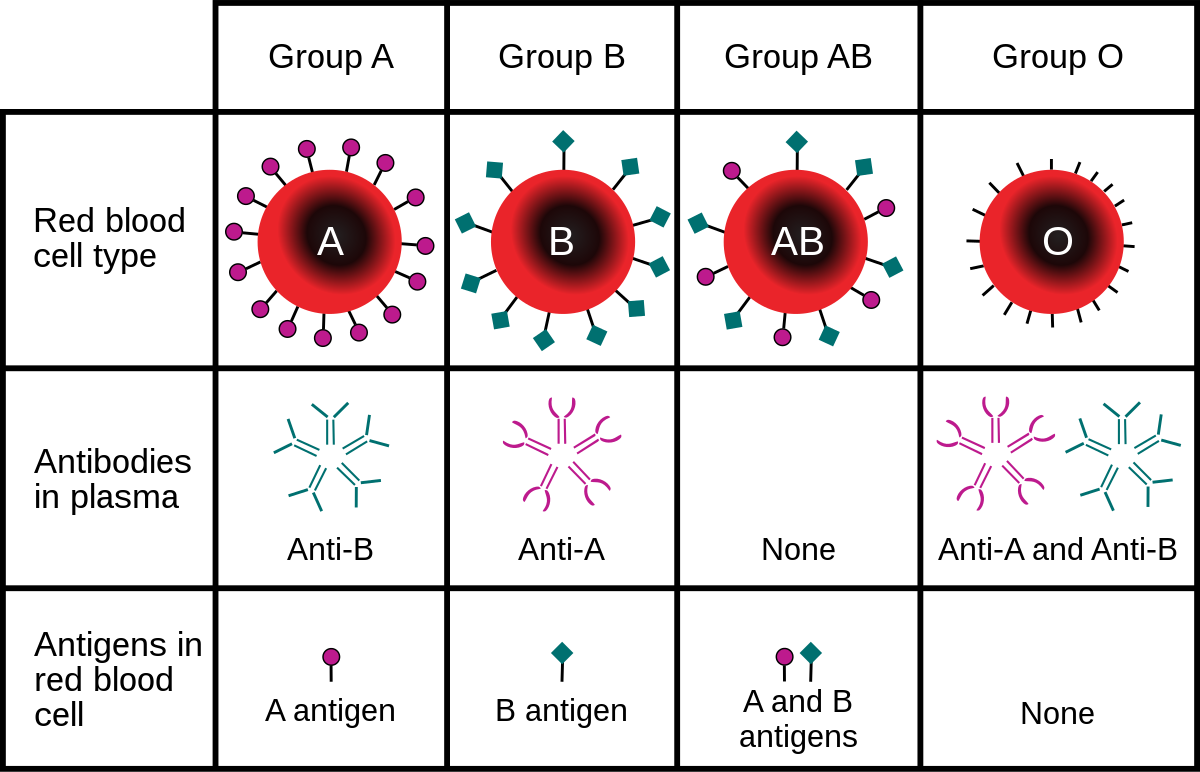The ABO blood group system is a classification system used to categorize blood types based on the presence or absence of certain antigens (proteins) on the surface of red blood cells. The system is named after the three antigens involved in it – A, B, and O. People can have either the A antigen, the B antigen, both A and B antigens, or neither of them. The presence or absence of these antigens determines a person’s blood type. The ABO blood group system is the most important blood group system for human blood transfusions and is used to determine compatibility between blood donors and recipients. The system was first discovered by Karl Landsteiner in 1901, and his groundbreaking work paved the way for further research into blood groups.
ABO Blood Group and Nobel Prize
The Nobel Prize in Physiology or Medicine in 1930 was awarded jointly to Karl Landsteiner for his discovery of the ABO blood group system.
Blood Group Types
The ABO blood group system classifies blood into four types: A, B, AB, and O. This classification is based on the presence or absence of antigens on the surface of red blood cells.
- Type A blood has the A antigen on its red blood cells, while type B blood has the B antigen.
- Type AB blood has both A and B antigens, while type O blood has neither A nor B antigens.
- People inherit their blood group from their parents, with each parent contributing one of two possible genes. The A and B genes are codominant, while the O gene is recessive.

Knowing a person’s blood group is important in medical settings, as it can affect the compatibility of blood transfusions and organ transplants.
The ABO blood group system is a way to identify different types of blood based on the proteins (called antigens) that are on the surface of red blood cells. These antigens can cause the body’s immune system to react, so they are used to determine a person’s blood type. There are two main antigens, A and B, that can be present on the surface of red blood cells in different combinations. People with type A blood have the A antigen, people with type B blood have the B antigen, people with type AB blood have both the A and B antigens, and people with type O blood have neither the A nor B antigen.
What specifically determines a person’s abo blood group?
Blood type is determined by the genes inherited from parents. There are three versions of the gene: A, B, and O. Each person has two copies of this gene, which can be combined in six ways. The A and B genes produce antigens, while O does not. Someone with AA or AO genes will have A antigen and be blood type A. BB or BO genes produce B antigen, and the person will be blood type B. AB genes produce both A and B antigens, so they are blood type AB. OO genes do not produce any antigens, making the person blood type O.
Applications of ABO Blood Group System
The applications of the ABO blood group system are as follows:
- Blood transfusions: The ABO system helps doctors match blood types of donors and recipients for safe transfusions.
- Organ transplants: The ABO system is important in matching donors and recipients for successful organ transplants.
- Paternity testing: The ABO system can help determine if someone is a child’s biological father.
- Forensic investigations: The ABO system can be used in criminal investigations to identify suspects by analyzing blood samples.
- Medical research: The ABO system is used in research to learn more about the link between blood type and certain diseases.
- Personal identification: The ABO system can be used to identify people, such as in missing persons cases or in disaster victim identification.
In conclusion, the ABO blood group system is very useful in medicine, forensics, and personal identification. It helps keep people safe and healthy, and helps us learn more about our bodies.
Also Read